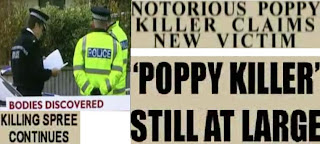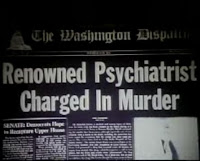7. Looking back at your preliminary task, what do you feel you have learnt in the progression from it to the full product?
Preliminary Brief: Film and edit a character opening a door, crossing a room and sitting down in a chair opposite another character. A couple of lines of dialogue must then exchanged between characters & match on action, shot/reverse shot and the 180-degree rule should be demonstrated.
Video Brief: The titles and opening of a new fiction film, to last a maximum of two minutes (all video and audio material must be original, produced by candidates, with the exception of music or audio effects from a copyright-free source).
I feel I have learnt a lot since completing the preliminary task and I think my skills have developed.
BRIEF.
The brief to the preliminary task seemed quite simple and had a main objective of making the continuity successful during filming and editing. Therefore during the preliminary task, the sequence was kept uncomplicated and controlled, as we concentrated largely on continuity.
The brief for our opening sequence was much wider and required me to be controlled as well as creative. We had to think of an opening sequence that included aspects from the preliminary task, one that worked well and was interesting. For this brief, I was aiming for perfection, and saw the preliminary task as a learning process that prepared me for this stage.
After reading the brief, the next stage was the PRE-PRODUCTION; research & planning.
This stage was kept fairly short for the preliminary task due to time constraints, however I still learnt a lot from it.
Before we could begin shooting our short sequence, we were able to produce:
- A storyboard
- Shooting script
- Dialogue script for our final idea.
These proved to be really helpful and had a huge impact on our final piece. The storyboard allowed us to visualise the sequence and ensured that every member of our group had the same vision for the sequence. The shooting script meant we could order to shoot specific shots, ensuring we used our time efficiently. We were also able to do location reccys for the preliminary task.
This planning prepared me for what was essential for the opening sequence. However it was necessary to go into more detail for the film brief and the preliminary task didn’t prepare me for this. As a group however, we knew that it would be more complicated and required more planning to save time and make fewer mistakes, and we were therefore organised.
PRODUCTION.
At the production stage of the preliminary task we could not have a test shoot or reshoot due to shortage of time. This meant we just had to shoot the final piece, allow no space for big mistakes and really think it all through thoroughly.
However we had produced a:
- Shooting script and arranged the shot order of how we were going to shoot. This organisation meant we saved time and knew every shot that we had to shoot, ticking them off along the way.
- The process of running a shoot used during our preliminary task was very efficient. Before we shot each
individual shot, the director would say “sound ready, camera ready” and then name the take and then say “action.” We carried this method into the production when filming our opening sequence to a film. It meant we could check everything was ready before we shot and when we came to editing, we would be aware of what take and shot it was.
- We also allocated roles to each member in our group and therefore made running the shoot a lot easier. Everyone knew the role they had to play and this made it a lot more efficient. We used this method during filming of our film opening sequence and this really helped as it took a lot shorter to shoot than it could have.
From the final opening sequence however I have learnt that a location reccy as well as a test shoot and re-shoot is important. It allows you to correct mistakes or change things that you didn’t notice whilst filming.
From the progression from my preliminary task to the full product I have learnt in this stage that:
- We need test shoots
- Re-shoots are really important
- There needs to be time allowed for more takes of shots so that you can pick the best take
- I have also learnt that it is useful to shoot with more shot types of angles and distances; this was especially worthwhile for our nightmare sequence.
Overall time was a main factor in both and I have learnt that allowing more time for shooting can really improve the quality.
Once we had all our footage, we could begin the next stage; POST-PRODUCTION/EDITING.
During the preliminary task our main aim was to construct something that makes sense. We didn’t have to consider a story behind it, it didn’t have to be a film opening and restricted time meant we just had to keep it as simple as possible. This editing process reminded me of the basics needed when editing, such as capturing, adding onto timelines, unlinking, razoring, chopping up clips and re-ordering the sequence.
From this experience, it meant I could save time whilst editing the final product of the opening sequence. However I did learn that constructing a narrative is quite hard, especially since I assumed that the simple sequence of the preliminary would be easy when it wasn’t. I also learnt that footage looks different on the camera to when you put it on the computer and you must therefore take this into consideration whilst filming so as not to encounter too many reshoots.
The final stage of both projects is the FEEDBACK & EVALUATION.
For the preliminary task, there was no need to consider the target audience; it was just constructed for media students’ learning experience with a theoretical approach. Therefore it taught me the technical side and meant I could take into account factors that went wrong in the preliminary task for the real full product. This included noise such as camera noise which was difficult to solve and also other people that aren’t involved in the piece.
For the final opening we had to find a location that wouldn’t have this problem or was easily solved. As we were made aware of how it takes longer than we think and doing it on a strict time basis isn’t suitable, we knew to allow ourselves a lot of time for the various parts of the project, without leaving it to the last minute. I have also learnt however that target audience and appeal is an extremely important part of making any part of a film, especially an opening. Receiving feedback throughout the whole project is really important to keep improving it and finding out if it attracts the audience.
The preliminary task also showed me how working as a team was extremely important when it came to all stages of the project.
















